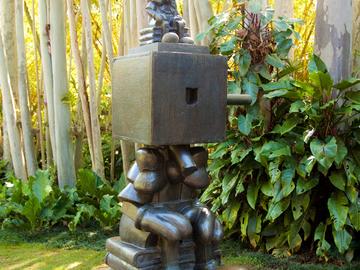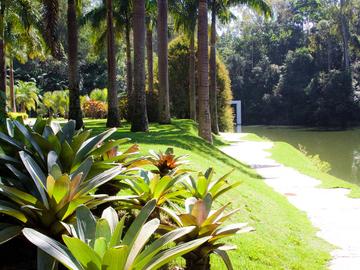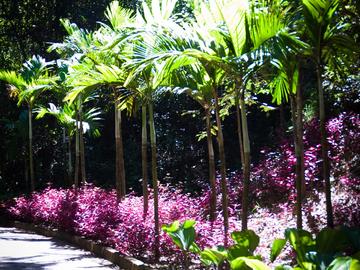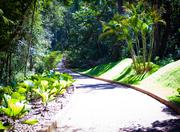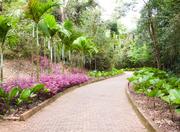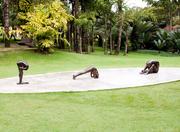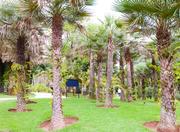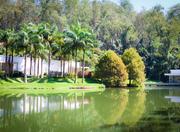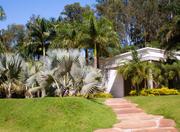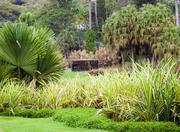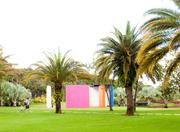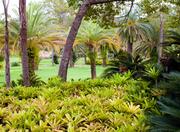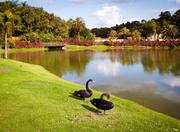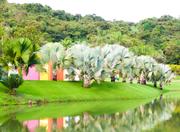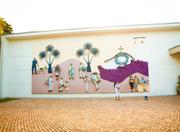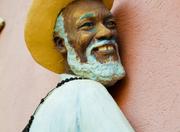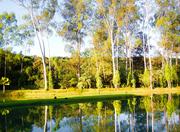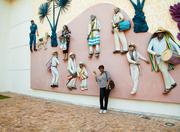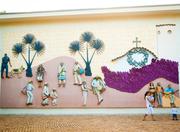Inhotim Institute Picture 14
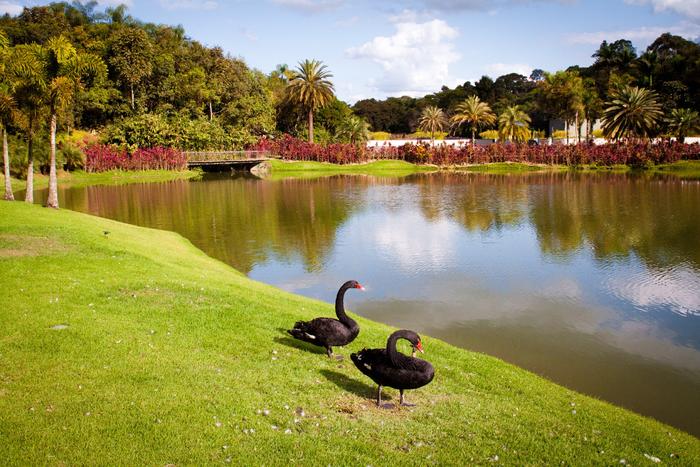
More information on Inhotim Institute in Belo Horizonte Photo by: Stephanie Tôrres - Photography & Design
Inhotim Institute in Belo Horizonte
Like the 500 works of contemporary art in its collection, the Institute Inhotim transcends any definition. Located in a green area of 100 hectares in the city of Brumadinho (MG), 60 kilometers from Belo Horizonte, the place is not a museum, although it is art that moves their gear. Nor is it only a botanical garden, although there is among its groves and nurseries, more than 4,500 plants, trees and flowers from around the world. And it would be frivolous to say that the place is just a junction of two things.
The institute opened its doors to the public in 2004 and has since been visited by more than 500 000 people. Your landscaping project had the touch of Roberto Burle Marx, and around its trails and lakes, are one of the largest collections of palms in the world (about 1500 species) and the largest collection of Araceae in the Southern Hemisphere (over 450 species ), and spaces that recreate the environments of the Amazon and Atlantic forest.
That nature is part of the scene and five hundred works that are scattered - outdoors and in galleries - the space of the institute. Extremely visual, but audible, tactile and olfactory, the works are signed by artists from more than 100 nationalities, like the American Chris Burden, Navin Rawanchaikul Thai, Japanese Yayoy Kusama and Brazilians Helio Oiticica, Tunga and Cildo Meireles.
Many of the works were erected from the site-specific method, in which the artist's work speaks to the scenery that surrounds it. And the result could not be better: visit Inhotim became a palatable ride for seniors, adults and children, who, while walking inside buildings bold architecture and interact with buildings mirrored, can also admire a lake full of swans and families trees over 30 feet tall.
Art and landscape
One of the great examples of this integration of art and nature is the work 'Sonic Pavilion', the American artist Doug Aitken. He drilled a tube well with a depth of 202 meters on the slopes of the park and there entered six microphones. Then connected them with hearing aids, which were placed, as the surface within a building made of glass with steel, whose shape resembles that of a flying saucer.
The visitor sits inside the building and, while admiring a beautiful panoramic view of the Inhotim, hear the sounds - like almost always whispers and winds - from the depths of the earth. If you're lucky, you can still hear the echoes of explosions made in the mines operating in the region of Brumadinho.
Another interesting work is the 'Beam Drop', the American Chris Burden, held in the park's highest points: the artist climbed a crane at a height of 45 meters, dropped 71 beams (average of 10 meters, all taken from junkyards of Belo Horizonte) towards a ditch filled with wet cement. All were standing in a chaotic position, forming an interesting contrast between the rust and bright green trees that surround them. Looking to the horizon, still dazzles the visitor with the majestic mountains of the Valley Paraopeba.
In the work 'Narcissus Garden', the Japanese Yayoy Kusama, 500 stainless steel ball float over a reflecting pool
Inhotim also has 17 galleries (some 1,000 m²) offering to the public issues extremely challenging and sometimes controversial as well. Rio Branco in the gallery, the Spanish artist Miguel Rio Branco shown in videos and photos with shocking cruelty, the miserable routine of living in the area of Pelourinho, in Salvador (BA). It brings together the gallery Cosmococa facilities developed by Brazilian Helio Oiticica and Neville D'Almeida, where visitors can watch, between mattresses, nets and bladders, the slides mounted by two artists: the projections showing images of pop icons like Marilyn Monroe covered with traces cocaine, displayed at the sound of Hendrix guitar or an accordion forró.
The public Inhotim, on the other hand, may choose to perform a total immersion in the world of botany. The institute has a space named Nursery Educator with 25 thousand square meters, where it is possible to know the rainforest trees (such as rosewood-of-palm-bay and juçara, both endangered), poisonous plants (like grass, the devil) and a typical tropical forest, with an average temperature of 30 ° and 90% relative humidity, the so-called Greenhouse Equatorial home to dozens of species found in Amazonia.
The Institute is located in the city Inhotim Brumadinho (MG), about 60 km from Belo Horizonte.
Business hours
Reserve at least two days to visit the Inhotim. The place is huge and contains hundreds of attractions. Although the institute offers motorized transport for work located in distant places, visitors will walk a lot in the park. So, dress and comfortable shoes.
Inhotim open from 9:30 to 16:30 Tuesday through Friday and from 9:30 to 17:30 on Saturdays Sundays and holidays. The entrance fee is affordable: $ 20 (entire entry). Paying $ 10 more than the visitor has the right to use motorized transportation within the institute.
Food
By visiting Inhotim, the public need not worry about taking the famous snack in her purse. The Institute offers nine feeding sites, with different ingredients and prices. There are sophisticated restaurant from Monkfish up kiosks that serve pizzas and hot dogs. It is worth a pound taste the food of the restaurant Oiticica, full of healthy options.
SERVICE
Rua B, 20 - Brumadinho (MG)
(31) 3227-0001
www.inhotim.org.br
More Photos of Inhotim Institute Picture 14
